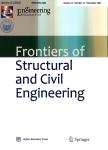Development of temperature-robust damage factor based on sensor fusion for a wind turbine structure
Development of temperature-robust damage factor based on sensor fusion for a wind turbine structure作者机构:Department of Civil and Environmental Engineering University of Illinois at Urbana-Champaign Urbana IL 61801 USA School of Urban and Environmental Engineering Ulsan National Institute of Science and Technology (UNIST) Ulsan 689- 798Republic of Korea Coastal Development & Ocean Engineering Research Division Korea Institute of Ocean Science and Technology Ansan 426-744Republic of Korea Department of Civil and Environmental Engineering KAIST Daejeon 305-701 Republic of Korea
出 版 物:《Frontiers of Structural and Civil Engineering》 (结构与土木工程前沿(英文版))
年 卷 期:2015年第9卷第1期
页 面:42-47页
核心收录:
学科分类:1305[艺术学-设计学(可授艺术学、工学学位)] 080904[工学-电磁场与微波技术] 0809[工学-电子科学与技术(可授工学、理学学位)] 08[工学] 080202[工学-机械电子工程] 0813[工学-建筑学] 0802[工学-机械工程] 0814[工学-土木工程]
基 金:The support is gratefully appreciated supported by Basic Science Research Program through the National Research Foundation of Korea (NRF) funded by the Ministry of Education
主 题:sensor fusion damage detection structural health monitoring
摘 要:Wind power systems have gained much attention due to the relatively high reliability, maturity in technology and cost competitiveness compared to other renewable alternatives. Advances have been made to increase the power efficiency of the wind turbines while less attention has been focused on structural integrity assessment of the structural systems. Vibration-based damage detection has widely been researched to identify damages on a structure based on change in d^mmic characteristics. Widely spread methods are natural frequency-based, mode shape-based, and curvature mode shape-based methods. The natural frequency-based methods are convenient but vulnerable to environmental temperature variation which degrades damage detection capability; mode shapes are less influenced by temperature variation and able to locate damage but requires extensive sensor instrumentation which is costly and vulnerable to signal noises. This study proposes novelty of damage factor based on sensor fusion to exclude effect of temperature variation. The combined use of an accelerometer and an inclinometer was considered and damage factor was defined as a change in relationship between those two measurements. The advantages of the proposed method are: 1) requirement of small number of sensor, 2) robusmess to change in temperature and signal noise and 3) ability to roughly locate damage. Validation of the proposed method is carried out through numerical simulation on a simplified 5 MW wind turbine model.



